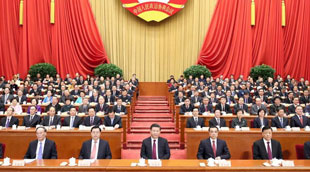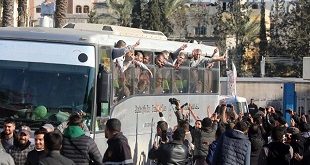
By Matthew Stein
Africa’s compendium of misery is released and the UPDF plays a role
In August 1998, as Uganda and Rwanda turned their backs on Laurent Kabila, the former Congolese rebel they had backed to overthrow President Mobutu Sese Seko’s regime, a new period of brutality was being initiated in the Democratic Republic of Congo (DRC). This bloody period, known as the Second Congo War, would last until January 2000, and included the participation of 21 irregular armed groups and at least eight national armies, including Uganda, Rwanda, DRC, Angola, Zimbabwe and Burundi.

According to the United Nations report that documents, ‘the most serious violations of human rights and international humanitarian law committed within the territory of the Democratic Republic of the Congo between March 1993 and June 2003,’ at least 200 violent incidents occurred during the Second Congo War. The most notable, in Uganda’s case, took place in the DRC border town of Beni where the Uganda People’s Defence Forces (UPDF) engaged in battles for years with the Mayi-Mayi, a community-based militia.
In trying to quell the Mayi-Mayi, the UPDF, says the report, ‘instituted a reign of terror for several years with complete impunity. They carried out summary executions of civilians, arbitrarily detained large numbers of people and subjected them to torture and various other cruel, inhuman or degrading treatments.’ The report alleges that the UPDF, ‘introduced a particularly cruel form of detention, putting the detainees in holes dug two or three metres deep into the ground, where they were forced to live exposed to bad weather, with no sanitation and on muddy ground.’
In fact, similar UPDF violence is scattered across the entire 544-page document. Over and again, the UPDF is accused of potential war crimes not solely during the Second Congo War, but during the First Congo War between July 1996 and July 1998, and the transition period of January 2001 to June 2003. In Boma, says the report, the UPDF, teamed with their military allies, the Rwanda Patriotic Army (APR) and the Congolese National Army (ANC), and collectively raped women; in Moanda, Matadi and Mbanza Ngugu they systematically pillaged bank vaults; in Bunagana, a village on the Ugandan border, the UPDF killed between 28-36 Hutu civilians; and in Ituri district thousands of minors were recruited into the ranks of the Ugandan army.
Although the final UN report was released on Oct. 1, an earlier draft was leaked to the media in late August, setting off a whirlwind of controversy; Rwanda, abhorred by the allegations, said the report was trying to manipulate history and threatened to withdraw from UN peacekeeping mission in Darfur. Uganda followed suit by threatening to withdraw from their UN mission in Somalia.
In its response to the UN draft report, Uganda’s Foreign Minister Sam Kutesa penned an indignant letter to the United Nations High Commissioner for Human Rights on Sept. 24. The draft report, says Kutesa, ‘is a compendium of rumors deeply flawed in methodology, sourcing and standards of proof. Its authors heavily relied on information supposedly provided by unspecified NGOs and individuals whose motives are suspect.’
But, as the authors of the reports clearly present, each of the documented incidents is backed by at least two independent sources identified in the report. Moreover, the report’s authors argue, ‘over 1,500 documents relating to human rights violations committed during this period were gathered and analysed with a view to establishing an initial chronology by region of the main violent incidents reported. Only incidents meeting the gravity threshold developed in our methodology were considered. The in-field Mapping Teams then met with over 1,280 witnesses to confirm or invalidate the violations listed in the chronology. During these interviews, information was also collected on previously undocumented crimes.’
Still Kutesa is unconvinced. He writes that the report accuses the UPDF of crimes in areas where it had not even been deployed. If the authors had wanted the truth, he says, the Ugandan government should have been consulted during the two year-long investigation.
In his final point, Kutesa argues, that the report is ‘silent’ on the activities of the Allied Democratic Forces (ADF), National Army for the Liberation of Uganda (NALU) and the Democratic Forces for the Liberation of Rwanda (FDLR). However, in both the draft and final report, each of these groups is accused of serious crimes. ‘On 17 January 2002, Mayi-Mayi and FDLR elements killed six civilians, including three women, and set fire to four houses elements of the FDLR also raped Pygmy women. In North Kivu, the Ugandan rebels of the ADF/NALU attacked and looted several villages in Beni territory, abducting children, young girls and women whom they used as slaves, including sex slaves.’
As evidenced with these excerpts, either Minister Kutesa or his assistants did not fully read this document or they didn’t read it close enough. Although UPDF crimes are far more pronounced in the report, the report is hardly ‘silent’ on these other guilty groups.
But perhaps Kutesa can be excused ‘the report, after all, is over 500 pages long. And despite being a tragic compendium of African misery, it can prove difficult to get through in its entirety. Perhaps the same bout of inattention struck a journalist from a local newspaper when he mistakenly wrote in an Oct.4 article that the UN had backed down and removed sensitive accusations from the final report under Ugandan and Rwandan pressure.
Yet if individuals such as Minister Kutesa, outright deny and discredit the report, how can we expect other leaders to exercise the discipline and energy to react to it? Congolese authorities, acknowledges the report, have repeatedly proven to lack the political will to prosecute serious violations of international humanitarian law.
‘The problem in the DRC is less one of inadequate provisions in the criminal law than a failure to apply them,’ says the report. ‘It has been widely noted that the Congolese judicial system faces acute and overwhelming problems.’ (In the draft report this statement reads: It is universally accepted that the Congolese judicial system is in poor health and even in a ‘deplorable state’.)
The authors of the report declare from the onset that their intentions were not to identify the perpetrators and hold them accountable for their actions, but rather, ‘to expose in a transparent way the seriousness of the violations committed, with the aim of encouraging an approach aimed at breaking the cycle of impunity and contributing to this.’
However, as denunciations of the report being illegitimate continue to dominate headlines instead of the inhumane violence inside, the DRC’s horrors are still a long way from being over.
UPDF crimes in the UN report:
335. On 13 August 1998, ANC/APR/UPDF troops took control of the Inga hydroelectric power station in the Bas-Congo and stopped the turbines on the dam. By stopping the turbines on the Inga dam for three weeks during August and September 1998, the ANC/APR/UPDF troops deprived part of the province of Bas-Congo and several neighbourhoods in Kinshasa of power and water supplies. They thus made unusable property that was essential to the survival of the population, such as medical centres and the General Hospital in Kinshasa. During these three weeks, the mortality rate in the medical centres increased significantly, particularly amongst children.
402. During the period under consideration, the Bas-Ul district remained under the control of ALC (Movement for the Liberation of Congo)/UPDF soldiers. The latter allegedly committed serious violations against all those who dared to dispute their authority or criticised their involvement in pillaging the natural resources of the region. The case below is mentioned for illustrative purposes. From 2001 to January 2003, elements of the ALC/UPDF apparently tortured and killed an unknown number of civilians in the town of Buta. Most of the victims were held in muddy holes in conditions likely to cause death through disease or exhaustion. After a human rights activist had been tortured and held in one of the muddy holes by the soldiers, MONUC and United Nations organisations sent out an investigative mission and had these prisons shut down.
702. Between 2001 and 2003, the armed groups in Ituri (UPC, FNI, FRPI, FAPC and PUSIC) between them recruited thousands of children on the basis of their ethnic belonging. Thousands of Hema children allegedly recruited by the UPC underwent military training in the Mandro, Katoto and Bule camps. During this training, they were often tortured and subjected to inhuman and degrading treatment. In 2000, at least 163 of these children were sent to Uganda to undergo military training in the UPDF camp at Kyankwanzi.
 The Independent Uganda: You get the Truth we Pay the Price
The Independent Uganda: You get the Truth we Pay the Price


